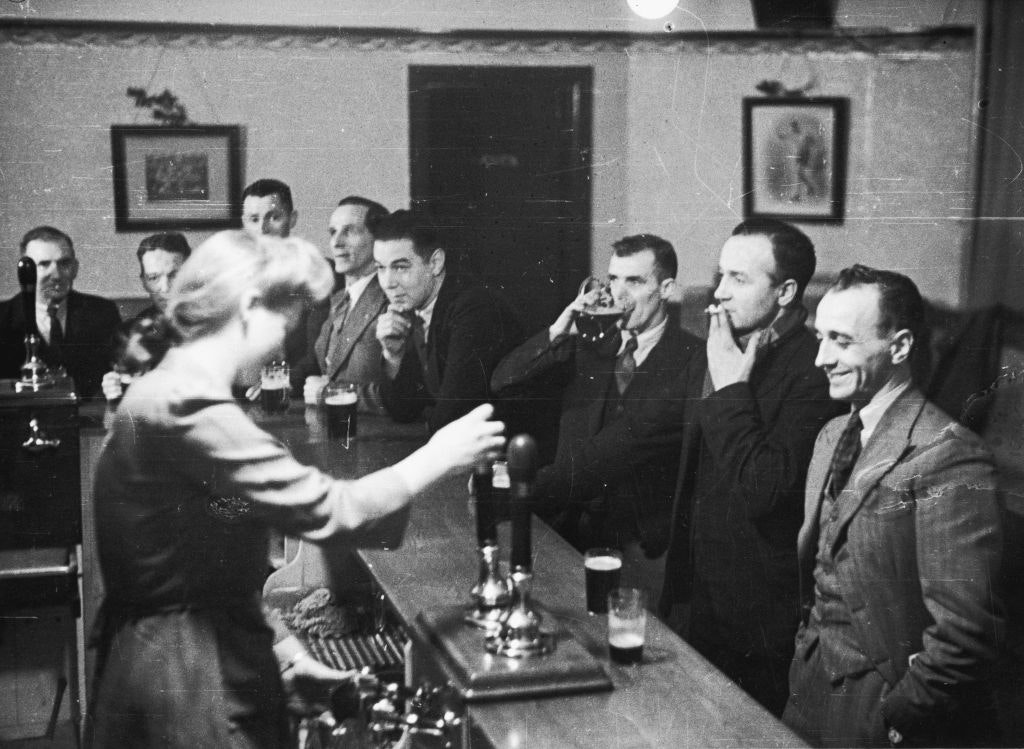Horrors of war
Christopher Silvester on two extraordinary films from Eastern Europe shown at the London Film Festival
This article is taken from the November 2021 issue of The Critic. To get the full magazine why not subscribe? Right now we’re offering five issue for just £10.
Showing at this year’s London Film Festival were two extraordinary films from Eastern Europe. The first of these, Babi Yar. Context, is a documentary by the Ukrainian director Sergei Loznitsa about before and after the September 1941 massacre by machine gun fire of 31,771 Jews at Babi Yar, a ravine outside Kiev.
Thankfully, there is no footage of the massacre itself to harrow us and the director chooses instead to insert a long, scrolling title extracted from a 1943 Vasily Grossman essay, “Ukraine without Jews”. But otherwise Loznitsa has assembled striking and poignant footage not only from official German, Ukrainian, and Soviet newsreel archives, but also from German amateur movies.

Indeed, there is one scene where dozens of German soldiers are photographing the Nazi general, Hans Frank — so many tourists in uniform. What must have seemed celebratory to them seems condemnatory to us.
The documentary begins with the Nazi invasion. Most startling is the relative absence of fighting, implying collapse, and the vast number of Soviet prisoners who are herded by relatively few guards.
There is some context that the documentary does not provide. The city of Lvov (known as Lemberg when it was part of the Austro-Hungarian Empire, and now known as Lviv, Ukraine) belonged to Poland between the wars. The Soviet Union annexed and occupied it in 1939, and made Ukrainian the language of instruction.
Hence the newsreel footage of Hans Frank being garlanded by the city’s formerly Polish population in 1941, when he became General Governor for the Occupied Polish Region — to them he was indeed, briefly, a liberator. Later in the documentary we see the Soviets return in July 1944 and a Soviet general and “liberator” being similarly garlanded with flowers.
We see a calm Kiev on the eve of invasion, but once Kiev is invaded, citizens eagerly claim their posters of “Hitler the Liberator” and children are thrilled to receive little Nazi flags. Following a series of bombings by Soviet Secret Police, the Nazi military governor orders “all Yids” to report to Babi Yar and to bring with them all valuables and warm clothing. That last detail hinted at resettlement rather than death and the Nazis, who had only expected around 6,000 to turn up were amazed when more than 30,000 obeyed the edict.
Babi Yar was also used for executions of Soviet PoWs, partisans, Ukrainian nationalists, and Roma, and, in total, over 100,000 were killed there, their bodies later exhumed and cremated by slave labourers in an effort to conceal evidence.
The sound design lends immersive realism to every scene, including some where presumably no original sound recording ever existed
Then we see the Soviet troops return. There is aerial footage showing hundreds of exploded and abandoned vehicles, and footage of fields strewn with corpses, many of them contorted in rigor mortis.
We see the 1946 courtroom testimony of Hans Isemann, an SS soldier who matter-of-factly says he shot 120 people in Lemberg, and of Dina Pronicheva, one of the few survivors of the Babi Yar massacre, who managed to crawl out from under a layer of soil at night while Nazis with torches were still shooting at any movement they could detect.
The coda to the film is footage of the deliberate flooding of Babi Yar with waste effluent from a local bricks factory in 1952 (the film does not include “context” of a 1961 mudslide caused by this effluent, which submerged a nearby community and killed 1,500).
There is no voiceover, only the occasional intertitle and the occasional black screen to separate scenes, and no music other than marching music during parades. The sound design lends immersive realism to every scene, including some where presumably no original sound recording ever existed.
Moral dilemma during wartime fascinates the Hungarian director, Dénes Nagy, in his debut feature, Natural Light.
During the Second World War, 100,000 Hungarian soldiers served as auxiliaries to the Nazi invaders in policing the occupied Soviet Union, knowledge of which was suppressed in Hungary under Communist rule. Nagy, who won the Silver Bear for Best Director at the Berlin International Film Festival in March of this year, took a character and around 6 pages from a 600-page novel, Természetes fény by Pál Závada, and developed this episode using material gleaned from the diaries of Hungarian soldiers. What made an impression on him was the juxtaposition of dull routine and brutality.
With a cast of non-professional actors, the film took seven years to develop
In the film, the soldiers visit a village in search of partisans, leave after filling their bellies, are directed along a route where they are ambushed, and return to the village to exact revenge. The leading character is sent on a phoney pursuit mission by his sympathetic commanding officer so that his soul will not be corrupted by taking part in the reprisal.
With a cast of non-professional actors, the film took seven years to develop. Nagy is, of course, familiar with the great tradition of Hungarian cinematography, and says he is an admirer of Tarkovsky as well as Carlos Reygadas, the Mexican director, whose most famous film is Silent Light (2007).
I formed the impression that he might also have been influenced by Son of Saul (2015), the debut feature by his fellow Hungarian, László Nemes, because in some shots he uses a similar lens technique of narrowing the field of vision around the protagonist.
This is likely to be the only time we shall ever see Ferenc SzabÓ — who plays the leading role of Corporal Semetka brilliantly on the screen. He apparently has no interest in pursuing a career before the camera, did not attend the premiere, and hasn’t even watched the film. You should, however. Natural Light is released in cinemas this month by Artificial Eye and on Curzon Home Video.
Enjoying The Critic online? It's even better in print
Try five issues of Britain’s most civilised magazine for £10
Subscribe














